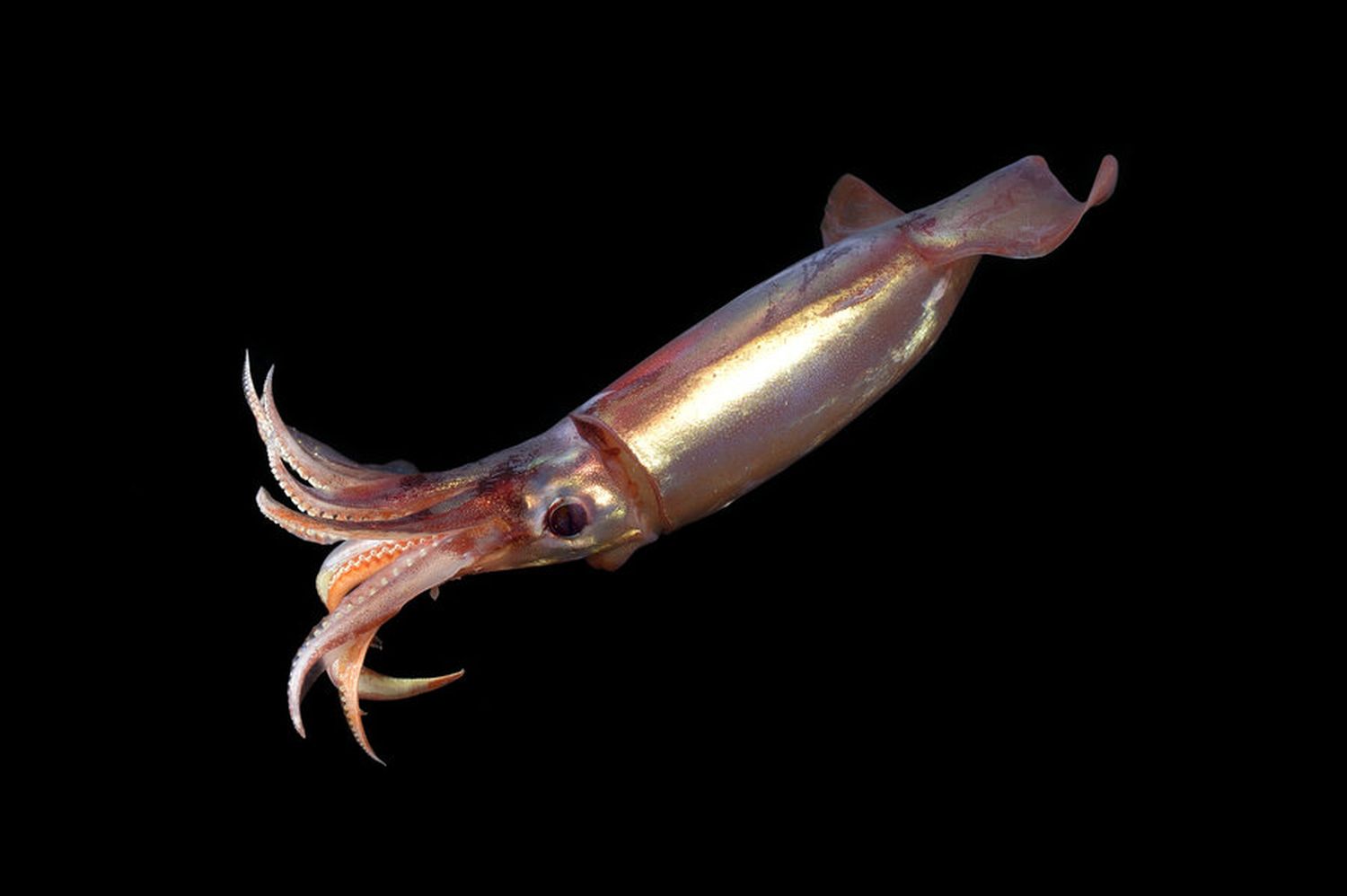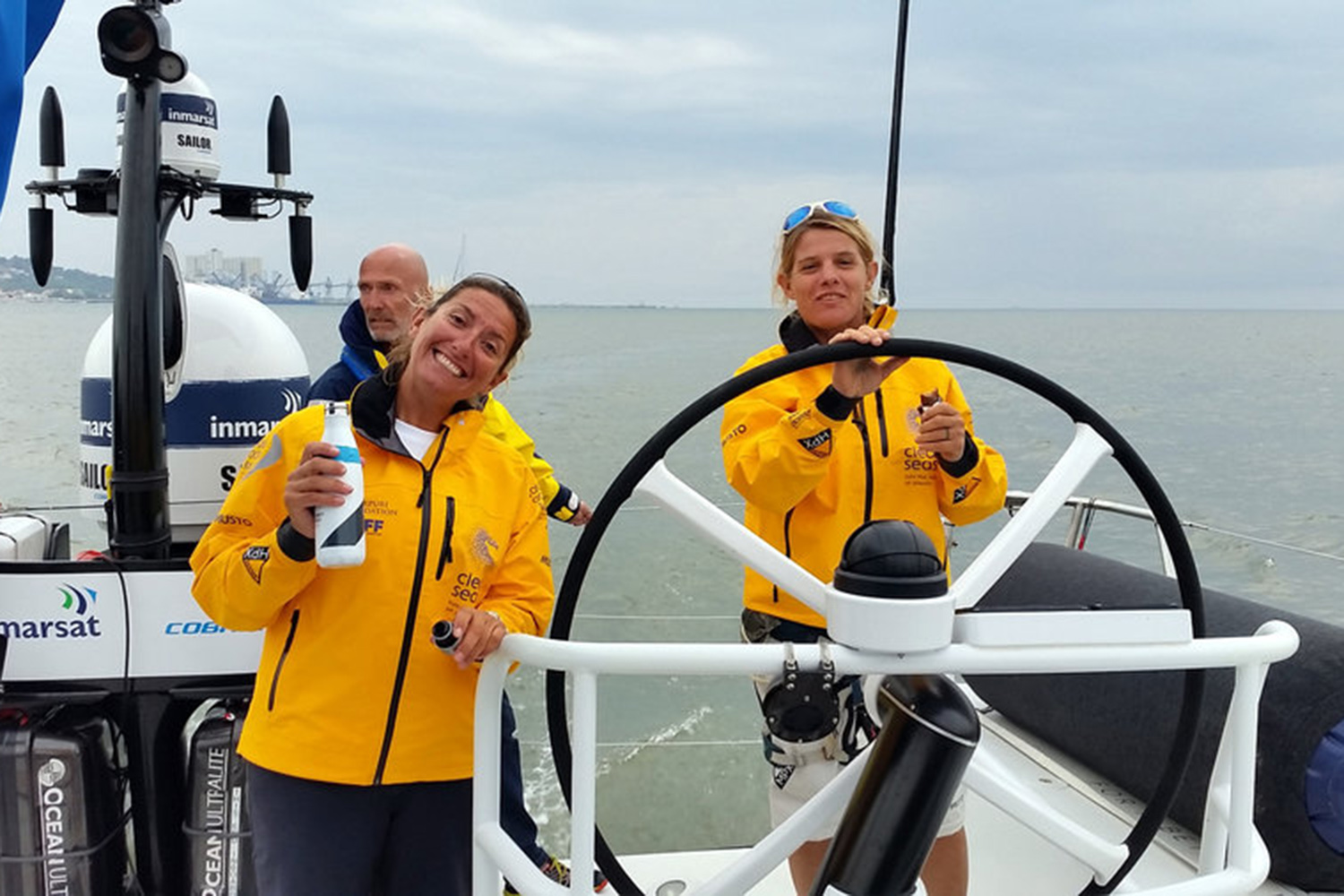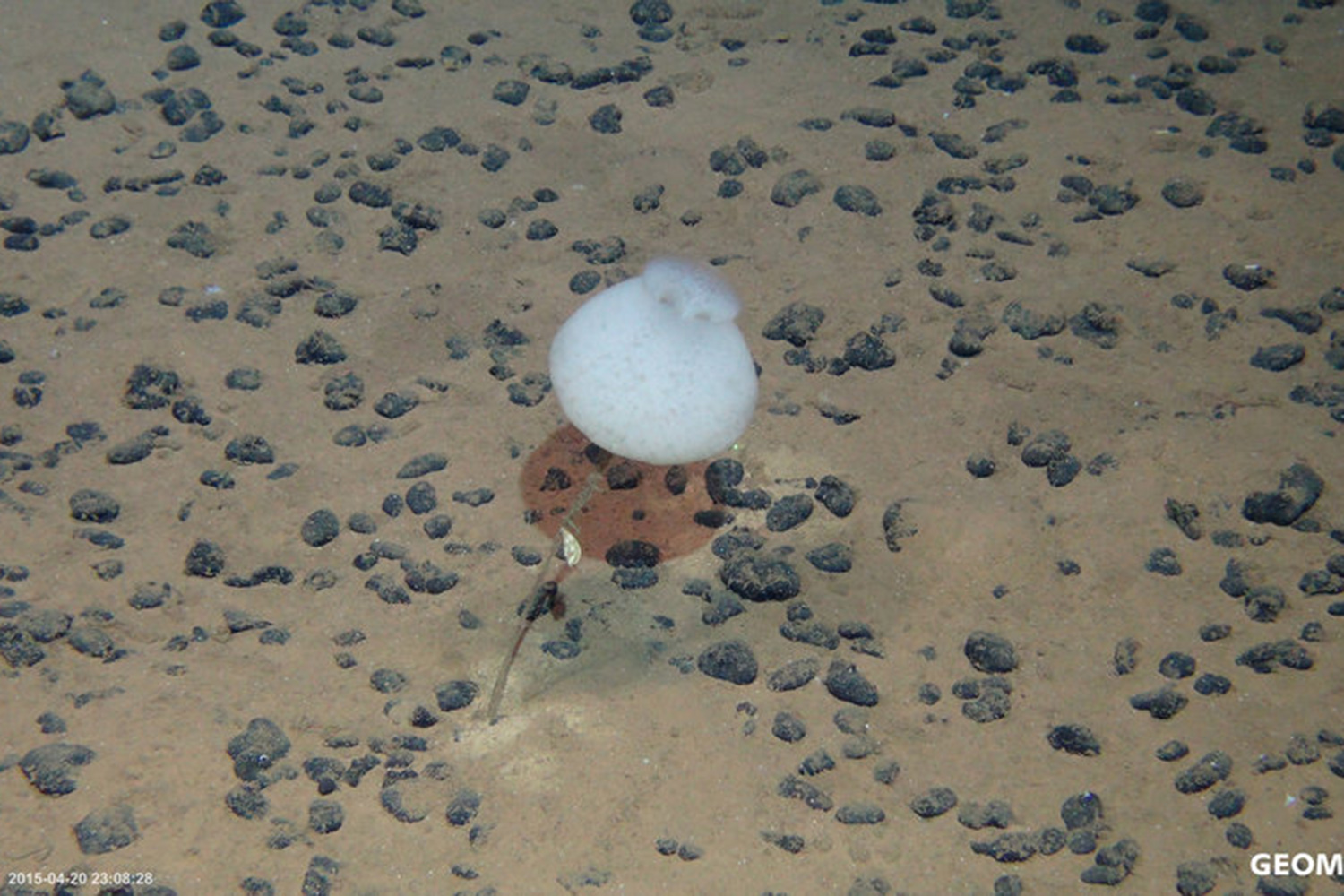(Joint press release of the GEOMAR Helmholtz Centre for Ocean Research Kiel and the Kiel cluster of excellence "The Future Ocean")
Squids and octopuses have always attracted the attention of mankind. In past centuries, sailors considered them as sea monsters. Today, scientists are fascinated by their intelligence and their physical abilities. Nevertheless, surprisingly little is known about most squid species and their ways of living, in particular in the open ocean and the deep sea.
Scientists from the GEOMAR Helmholtz Centre for Ocean Research Kiel and the Kiel Cluster of Excellence "The Future Ocean" have now published two studies that reveal new details on the role of squid in different parts of the ocean system. In a paper published recently in the journal PLOS ONE, the biologists analyze the feeding habits of the oceanic squid Sthenoteuthis pteropus from the tropical Atlantic for the first time in detail. The second study, published in the Proceedings of the Royal Society B, deals with the role of Pacific squids as transmitters of carbon to the deep seafloor.
"What both studies have in common is that they give clear indications that squids have important roles in the oceanic ecosystem during different parts of their life cycle," says Dr. Henk-Jan Hoving from GEOMAR, who is author of both papers.
In order to investigate the position of Sthenotheutis pteropus in the food web of the tropical Atlantic, the researchers had caught a total of 129 specimens in 2015 during three expeditions with the German research vessels METEOR and MARIA S. MERIAN. Afterwards, they examined the stomach contents and analyzed stable isotopes ratios in muscle tissue and in the gladius, a chitinous 'backbone' of the squids. The latter grows with the individual and hence can be used to obtain information on feeding environment and feeding habits throughout the squid's life. "Specific isotope ratios of muscle tissue allow estimations on the trophic level of an animal," explains Veronique Merten, biologist from GEOMAR and first author of the PLOS ONE study.
The team found that the animals show a very flexible prey spectrum from crustaceans to fish and even to cannibalism. In addition, the comparison of sectors of the gladius revealed that individual squid also migrate over long distances during their lifetime. "The species is very common off the west coast of Africa with an estimated biomass of several million tons, yet little was known about its life history," says Veronique Merten. Sthenotheutis pteropus should be considered as an important predator in the food web of the tropical Atlantic.
The second study is based on 80 dives with the underwater robot Doc Ricketts of the Monterey Bay Aquarium Research Institute (MBARI) in the Gulf of California. During 11 of these dives, the researchers have discovered squid remains (carcasses and hatched out egg sheets), which suggest in some cases true squid cemeteries on the ocean floor. "In the dead and sinking squid bodies, a lot of carbon is contained, which is thus withdrawn from the upper ocean layers and provided to deep-sea bottom communities," explains Dr. Hoving, who also participated in the cruises
When calculating the effectiveness of the biological carbon pump, dead small plankton organisms, particles and whales used to be considered primarily. More recently, other organisms such as jellyfish, which sink after their death into the deep, have been added to the calculation. "Squids are so far lacking in the carbon budgets, although populations of many species have a high biomass. Many species grow fast by feeding in the water column. They reproduce during a single reproductive cycle and then they die (like salmon), and some species sink to the bottom as we show in our study. So in areas where squid are abundant the seafloor may receive annually pulses of dead post reproductive squid. But how much this excatly contributes to benthic communities needs further investigation," says Dr. Hoving.
The importance of squid may increase in the future. "In some areas, the number of their main competitors, e.g. predatory fish, is getting smaller and smaller due to extensive fisheries, which has led to regional increases of opportunistic short living cephalopods. We should investigate the life cycles and biology of cephalopods, also in the deep sea, in order to be able to better assess their significance and future in changing oceans," resumes Dr. Hoving.
Reference:
Merten, V., B. Christiansen, J. Javidpour, U. Piatkowski, O. Puebla, R. Gasca, H. J. T. Hoving (2017): Diet and stable isotope analyses reveal the feeding ecology of the orangeback squid Sthenoteuthis pteropus (Steenstrup 1855) (Mollusca, Ommastrephidae) in the eastern tropical Atlantic. PLOS ONE
https://doi.org/10.1371/journal.pone.0189691
Hoving, H. J. T., S. L. Bush, S. H. D. Haddock and B. H. Robison (2017): Bathyal feasting: post-spawning squid as a source of carbon for deep-sea benthic communities. Proc. R. Soc. B 20172096
https://doi.org/10.1098/rspb.2017.2096
Links:
www.geomar.de The GEOMAR Helmholtz Centre for Ocean Research Kiel
www.futureocean.org The Kiel cluster of excellence "The Future Ocean"
Contact:
Jan Steffen (GEOMAR, Communication and Media), Tel.: +49 431 600-2811
presse@geomar.de
…


